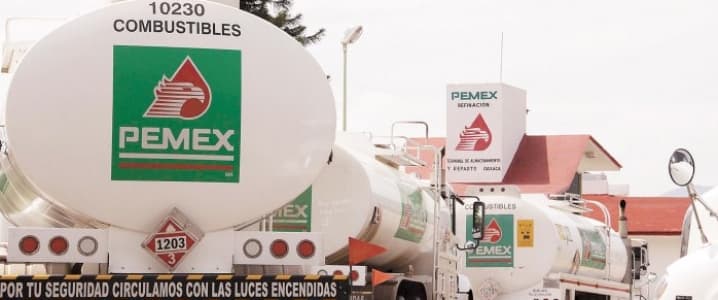Mexico is about to reap at least US$3 billion this year based on its sovereign oil hedge after having received a record US$6.4 billion in 2015.
It is expected that the Mexican government will soon decide to continue hedging actions for 2017 in light of the low price of oil, and in order to maintain investor confidence. But are such actions a safe bet against potentially fluctuating oil prices, or is Mexico taking an unnecessary risk against possible gains in the future? And can Mexico learn any lessons from other states in Latin America and the Caribbean that have recently taken on a strategy of sovereign oil hedging?
For over a decade, Mexico’s government has paid for a hedge every year as part of one of the world’s biggest sovereign oil derivatives trade. The states received payouts in 1991 and 2009, but never during two consecutive years, though that will likely change for this year.
The Finance Ministry last December received a record amount for their sovereign oil hedge after having put options purchased in 2014 with an average price of US$76.40 per barrel. The record hedge was a major boost for public coffers in that it helped offset a shortfall in income from oil sales. (Legislators had approved the 2015 budget with an estimated price of $79 per barrel before global oil prices sank late last year).
The hedging agreement for 2016, which runs from 1 December of last year to 30 November, 2016, cost the state US$1.09 billion and guaranteed a price of US$49 per barrel. Since the beginning of the hedge period, the Mexican oil index that includes various domestic grades of crude has averaged US$32.40 a barrel. Per Bloomberg’s analysis, the government would make money even if the index of crude more than doubles to US$80 per barrel. Related: Why The Bear Market Could Be Over In A Flash
Despite the possible windfall for 2016, Mexican officials have yet to announce when they will make a decision concerning a possible 2017 hedge. This came as a surprise to some traders who were expecting a set date by last April following volatility in the West Texas Intermediate contract. In addition, some analysts believed it was in Mexico’s best interest to provide a date for hedging prior to market actions unfavorable for Mexico.
Along with hedging, the government under President Enrique Pena Nieto has typically enacted budget cuts in order to offset further revenue loss from the sale of oil. Last April the government announced at least US$9.3 billion in spending cuts and Finance Minister Luis Videgaray said hedging into 2017 would likely continue.
Since then, however, other factors have come into relevance aside from lower oil revenue. A further US1.6 billion will be cut in response to the impact of the Brexit, while domestic industrial production has also weakened. State-run oil giant Pemex, which finances roughly 20 percent of the federal budget, reported last month record low production and a fifteenth consecutive quarterly loss. As a result, the government may be swayed away from hedging and towards stronger budgetary restraint. Related: Six Weeks In A Row – Rising Rig Count Pushes Oil Down
“The Mexican government has done a good job at buying these put options because they have helped to smooth the transition of public finances towards lower oil prices, but it’s just breathing room,” said Carlos Capistran, chief Mexico economist at Bank of America to Bloomberg. “This buys the government time to think about the best way to go about expenditure cuts.”
On the other hand, Mexico could see the examples of several of its regional neighbors and decide to continue with hedging. In the case of Uruguay, for example, the country in June worked out a US$16 million deal with the World Bank to hedge oil. According to the World Bank, that decision arose in order to help shield Uruguay from the changes in the price of oil. Unlike Mexico, Uruguay is a net importer of oil, though the hedge came around from an important external factor: Venezuela halting the sale of oil to Uruguay around a year ago.
A more cautionary example of hedging occurred in Jamaica where the government hedged oil prices up to December 2016 at a price of US$66 per barrel. With the price of oil falling to less than half that rate last February, critics claimed that is has cost the state around US$20 million in earnings. Despite the opposition, Jamaican officials in June bought six hedging contracts from Citibank with the hope that oil prices could climb to as much as US$80 per barrel.
The window for oil hedging purchases by the Mexican government is usually between this month and September; thus, a decision to hedge or not for 2017 must be made very soon. Numerous factors, both domestic and international, must be considered in terms of hedging for next year. Hedging may not be the sure deal as it was for 2015, and possibly this year, but it remains to be seen which risk the Mexican government will opt for.
By Erwin Cifuentes for Oilprice.com
More Top Reads From Oilprice.com:
- 6 Signs The Big Global Switch To Solar Has Already Begun
- Citi On Libyan Oil Deal: It’s A “Headfake”
- Oil Soars 6 % As Andy Hall Warns Of A “Violent Reversal”


















